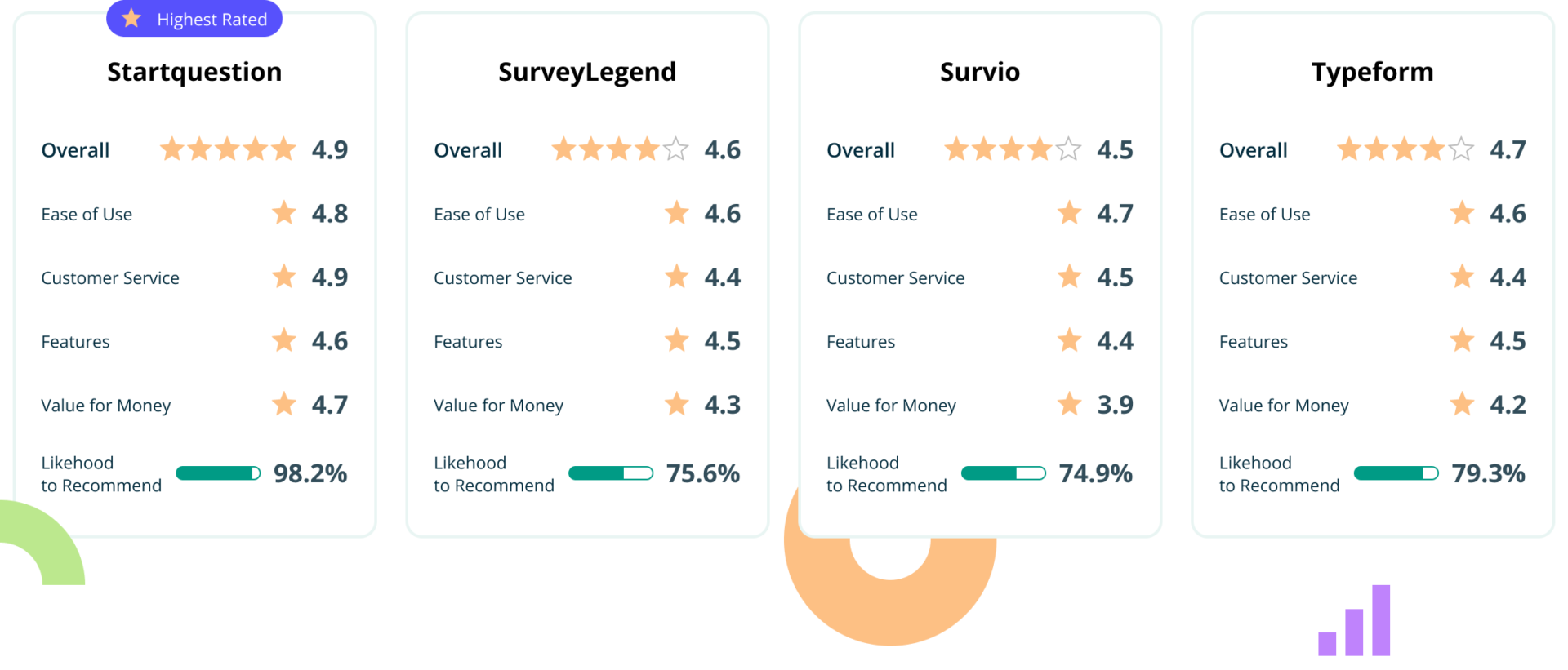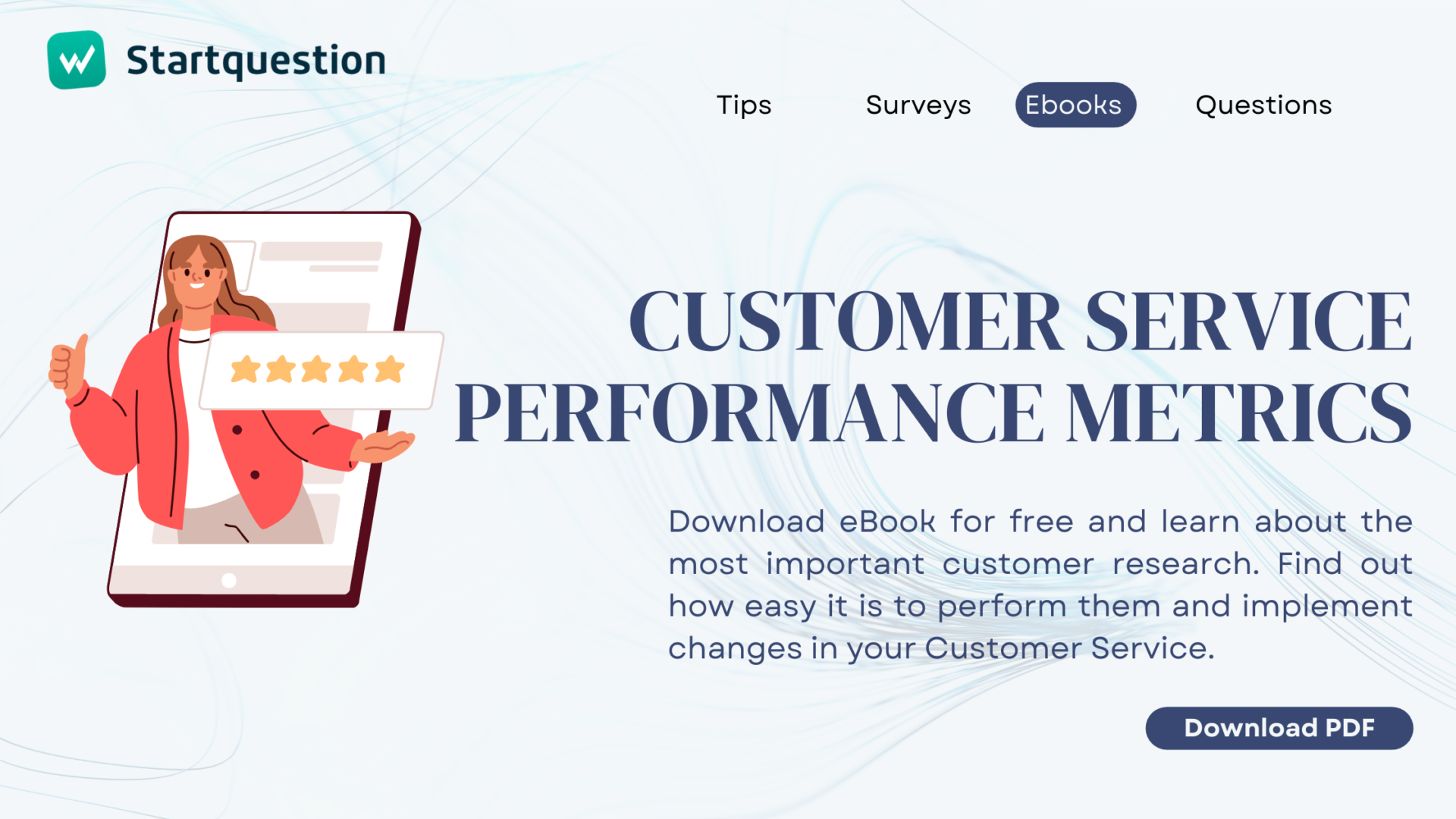For a successful work experience, it is important that employers and employees clearly communicate and understand each other’s expectations. Meeting these expectations can benefit both parties and create a productive and satisfying workplace. In this article, we will explore different types of employee expectations and how they can be effectively addressed.
Good supervisor-subordinate relationships resemble a mathematical equation.
On the one hand, we have the attitude and performance expectations of the organization. On the other hand – ideas about the ideal job of a newly employed person. Balance is essential for the outcome of the equation to be mutually beneficial.
In this piece, we will examine both perspectives in detail. However, before that, let’s clarify the contrasting viewpoints of hiring managers and new hires.
Professional survey software can help companies improve communication and transparency, track progress, and ultimately create a more productive workplace for everyone involved.
Put Your Trust in the Highest Rated Feedback Tool for HR Teams

Employee Expectations – How Could We Define Them?
In short, it’s what employees expect from the company.
Employee expectations refer to employees’ specific desires, requirements, and anticipated outcomes regarding their work environment, job responsibilities, performance goals, and overall experience within an organization.
These expectations can encompass various aspects such as compensation, career development opportunities, work-life balance, job satisfaction, company culture, communication, and more.
Employee Performance Expectations
Now let’s look at it from the employer’s perspective.
Setting employee expectations defines and communicates what an organization expects from its employees regarding job performance, behavior, and engagement.
Such a process involves establishing realistic and achievable goals, clarifying job responsibilities, outlining performance standards and metrics, and aligning employee expectations with the organization’s values and objectives. Organizations can set clear expectations to enhance employee understanding, motivation, and productivity and foster a positive work environment.
It is vital for employers and HR professionals to regularly assess and communicate these expectations, ensuring they are reasonable, transparent, and consistent across the organization.
Effective communication and ongoing feedback play a crucial role in managing employee expectations, addressing any concerns or misunderstandings, and fostering a sense of trust and collaboration between employees and the organization.
Types of Employee Expectations – List with Examples
As an employee starting a new job, certain expectations regarding their role contribute to their overall satisfaction and engagement. Here are some key expectations they often have:
Basic Expectations
When starting a new job, employees anticipate having a contract to sign and the necessary equipment for their work on their first day. They also hope their manager will provide a professional and empathetic onboarding experience to help them adjust to their new role and work environment. Additionally, new hires require clear guidelines and expectations for their responsibilities, deadlines, tasks, and company policies.
Onboarding Survey for HR
Do new employees feel good in your company? Does onboarding for new team members help them get started in your organization?
Onboarding Survey for HR
Do new employees feel good in your company? Does onboarding for new team members help them get started in your organization?
Recognition
There is no better way to boost employee engagement than by appreciating their work. Employees feel valued when their contributions and efforts are acknowledged. Recognizing their achievements enhances motivation and job satisfaction, ultimately impacting the organization’s success.
Work-Life Balance
Having a healthy work & life balance has a positive effect on retaining employees. It enables them to handle personal and professional responsibilities efficiently, reducing stress and preventing burnout at work. This balance is crucial in preventing work-related stress, leading to better job performance.
Feedback
Regular feedback is essential for employee growth and productivity. 60% of employees want feedback at least once a week. Positive feedback increases productivity by up to 12.5% and decreases turnover by 15%. Open communication with both positive and negative feedback is highly valued by employees.
Opportunity for Growth
Satisfied and motivated employees strive for development. They seek growth opportunities to develop their skills, advance their careers, and face new challenges. Access to training, mentorship, and clear career paths are essential factors in their job satisfaction.
Workplace Flexibility
Remote jobs and workplace flexibility allow employees to customize their work schedules, locations, and methods, promoting work-life balance, reducing stress, boosting job satisfaction, and enhancing overall well-being. It increases productivity and fulfillment in their work.
Leadership Factors
Influential leadership factors, such as clear communication, motivation, feedback, a positive work environment, and trustworthiness, significantly impact employee performance, engagement, and job satisfaction. Strong leadership increases morale, productivity, and loyalty, resulting in organizational success. It applies, in particular, to the behavior of direct superiors toward employees.
Positive Work Culture
Positive attitude and work culture is vital to job satisfaction, engagement, and employee well-being. It promotes collaboration and creativity, reduces stress and burnout, and improves productivity. A welcoming, inclusive, and enjoyable workplace with respectful communication, teamwork, acknowledging achievements, and work-life balance is crucial in retaining top talent.
How to Tell an Employee They Are Not Meeting Expectations
We already know what employees can expect from the organization. But that’s only one side of the equation. What does the other expect? In a nutshell: following the job description guidelines and entrusted tasks in a professional manner, good attitude to work, and respect for organizational values.
Setting expectations requires, above all, communication. During onboarding and on-the-job training, a good manager thoroughly informs new hires about the expected outcomes of their work.
It cannot be a one-time action. Conversations with the supervisor, monitoring task implementation progress, or preparing an employee handbook with clear guidelines for a position will help both parties.
What to Do When an Employee Is Not Meeting Expectations
If you need to talk to an employee who is not meeting expectations, it’s important to do so with empathy, clarity, and a focus on improvement. To help you communicate this message effectively, we’ve put together a list of steps.
When a new employee is not meeting expectations, here’s what to do:
- Plan ahead
Before discussing an employee’s performance issues, planning and gathering specific examples and evidence to provide concrete feedback during the conversation is best.
- Schedule a one on one meeting
Choose a private and comfortable setting where you can have an uninterrupted discussion, and ensure there is enough time for a meaningful conversation.
- Start with positives
Begin the conversation by acknowledging the employee’s strengths and positive contributions to create a constructive tone.
- Be specific and objective
While discussing areas of improvement, be specific and objective by outlining expectations that need to be met and providing examples of where the employee falls short.
- Encourage open dialogue
Frame feedback using “I” statements to express how their performance impacts you, the team, or the organization to avoid sounding accusatory and encourage open dialogue.
- Listen to their concerns
Allow the employee to share their perspective on their performance and any challenges they may face, actively listening to their concerns and being open to feedback.
- Offer assistance
Discuss ways in which you can assist the employee in improving their performance, such as additional training or mentoring.
- Set expectations
Clearly outline what is expected of the employee going forward and collaboratively develop an action plan to address performance gaps.
- Establish a timeline for progress
Set realistic and measurable goals, establish a timeline for reviewing progress, and provide ongoing support and feedback.
It’s important to remember that our conversation is all about helping the employee grow and reach their full potential. When we approach this discussion, it’s crucial that we do so with kindness and a focus on development. And let’s not forget to provide ongoing support throughout the process.

Setting Remote Work Expectations
The coronavirus pandemic has accelerated the transition to remote jobs in many organizations. A few years ago, working outside the office was a luxury reserved for individuals, but today it is the norm. It is also one of the priorities on the list of employees’ expectations.
Here’s how an employer can prepare an organization for remote work to maintain high productivity and employee satisfaction.
Employer Expectations Regarding Remote Work
To ensure productivity and maintain a positive work environment, it is crucial to establish clear guidelines and expectations. To achieve this, consider the following key points.
- Define Remote Work Policie
Clearly identify eligible employees and set specific hours/days for remote work. Communicate availability and response time expectations.
- Communication Guidelines
Specify your preferred communication channels and set clear expectations for check-ins and updates to keep communication lines open with your team.
- Performance and Productivity Expectations
Establish clear goals for remote work, measure productivity, create a dedicated workspace, and reduce distractions for better focus.
- Work Hours and Availability
Set work hours and clarify availability expectations. Discuss flexible schedules and how to request time off.
- Technology and Security
Specify the required hardware, software, and internet connection standards. Address data security and privacy concerns, including the use of VPNs and secure file sharing. Provide guidelines on how to handle sensitive information and protect company assets.
- Work-Life Balance and Well-being
Encourage breaks and clear boundaries for work-life balance. Promote mental health resources and support.
- Team Collaboration and Engagement
Boosting virtual team-building and effective remote collaboration is important, as is creating an inclusive work environment.
- Training and Support
Support remote work with training, resources, and tech support. Offer professional development for better skills.
Remote Work Expectations Tip
It’s essential to keep in mind that these guidelines are intended to be tailored to your organization’s unique requirements and culture. Consistently assess and adjust them in response to feedback and changing remote work trends. Effective communication and continual support are crucial to oversee remote teams.
What Should You Expect from Your Manager?
Establishing clear expectations is crucial for building positive workplace relationships between colleagues. When new employees join a company, they should expect certain things from their manager.
Although management styles and expectations may differ, here are some everyday things that new team members can reasonably anticipate from their manager (apart from the basic expectations listed at the beginning of the article).
Employee Pulse Check
Try out the Employee Pulse Survey – an employee engagement research used by HRs to evaluate the overall employee experience by collecting relevant feedback.
Employee Pulse Check
Try out the Employee Pulse Survey – an employee engagement research used by HRs to evaluate the overall employee experience by collecting relevant feedback.
Navigating New Hires: 7 Guidelines for Managers
- Talk to them. Clear expectations and regular feedback should be provided while encouraging two-way communication to address questions and ensure alignment.
- Treat new hires respectfully, value their perspectives, and create an inclusive environment where everyone feels appreciated.
- Support new employees with resources, training, and mentorship to excel and achieve personal and professional growth.
- Personalize your management style to cater to your new hire’s strengths, weaknesses, and learning preferences. Please provide them with individualized guidance to aid their development.
- Motivate new employees with clear objectives, recognition of accomplishments, and helpful feedback to reach their full potential.
- Be transparent with new employees about job expectations, company values, and potential challenges. Build trust through honest feedback and communication.
- Clear expectations, guidance, and accountability promote personal ownership and responsibility for new hires’ success.
By following these guidelines, managers can establish a positive and supportive relationship with new hires, facilitating their success and integration into the organization.
However, it is worth noting that these guidelines apply to both parties. Our equation makes sense only when cooperation is based on mutual respect and trust.
Monitoring & Setting Employee Expectations Tool
It’s time to introduce ourselves.
Startquestion is a platform designed to gather feedback from customers and employees, allowing for swift analysis and sharing of insights within the organization.

Let us explain how this involves gathering and managing employee expectations.
You can gain valuable employee feedback by utilizing customized surveys. Analyzing this feedback can reveal patterns and trends that highlight employee expectations. It allows prioritizing and addressing areas that need improvement, leading to greater employee satisfaction and engagement.
Tailoring programs and initiatives to meet these expectations can foster a culture of openness and communication, leading to higher employee satisfaction and overall organizational success.
Moreover, the survey software helps companies improve communication and transparency, track progress, and ultimately create a more productive workplace for everyone involved.
Find Out What Your Employees Expect with Startquestion
HR surveys are an effective tool to keep your finger on the pulse of employees and managers. We will gladly help you implement them in your company.




